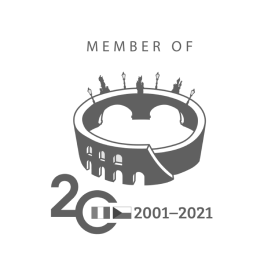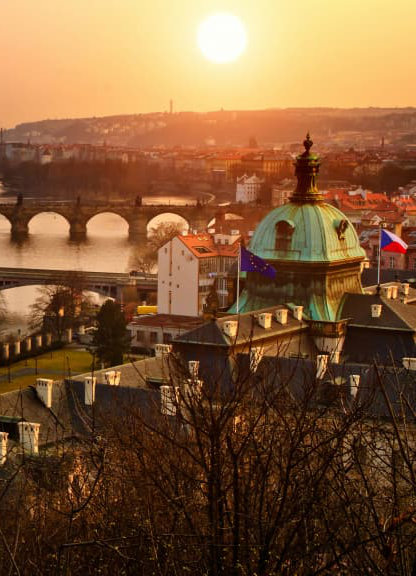
BUYING A HOME NEAR THE PRAGUE METRO: A LUXURY FOR THE FEW
In Prague, living near a metro station is no longer just about convenience it’s a symbol of affluence. According to new data from Metroindex, a tool developed by the real estate platform Flat Zone, the average price for a 70-square-meter apartment has now exceeded CZK 7 million at every metro stop across the capital. This marks the highest recorded average since data collection began. Such a milestone reflects the growing pressure on Prague’s housing market, where urbanization, increased demand, and speculative investment have combined to elevate real estate prices beyond the reach of most residents. The fact that even peripheral stations have crossed this threshold suggests a deep structural change in the city’s real estate dynamics, where access to public transport is now an unaffordable luxury for many rather than a basic urban need.
The Most Expensive Areas: City Center Dominates
At the top of the price spectrum is the historical center. Properties around Staroměstská station are the most expensive, with a 70-square-meter apartment costing an average of CZK 17.2 million. Following closely are apartments near Malostranská station at CZK 15.1 million and Jiřího z Poděbrad station in the Vinohrady district at CZK 14.07 million. These neighborhoods are not only central but also rich in cultural landmarks, architectural charm, and lifestyle amenities, making them perennial favorites for both locals and foreign investors. The combination of old-world elegance, green spaces, boutique shops, and access to elite schools and restaurants further increases their desirability. Consequently, property prices in these areas are rising faster than in other parts of the city, driven by limited availability and high demand from affluent buyers seeking prestige and investment security.
Rising Prices Even Where Metro Doesn’t Exist Yet
Interestingly, even future metro lines that are still under construction are contributing to upward price trends. The planned D line, which will eventually connect Pankrác to Písnice, is already reshaping the real estate market. Although the full completion of the project has been delayed beyond its original 2029 target due to regulatory and bureaucratic obstacles, real estate prices in the areas surrounding future stations have started climbing. Near the planned Písnice station, average apartment prices have already reached CZK 7.49 million, while properties near Nádraží Krč are going for over CZK 8.75 million. This speculative boom reflects the broader trend where anticipated infrastructure improvements attract early investors, who bank on long-term value appreciation even before construction begins. Developers are also quick to market new projects around these planned stations, further inflating prices and reinforcing the notion that transport access even potential access is a premium feature.
The “Cheapest” Areas Are Still Expensive
For those looking for more affordable alternatives, the options are limited and still far from cheap. The Roztyly area in Prague 11 offers the lowest average price near a metro stop, at CZK 7.29 million for a 70-square-meter apartment. However, even this figure represents a 12% increase over the past two years. Černý Most, located at the end of the yellow B line, comes in as the second most affordable area at CZK 7.5 million, despite its proximity to large shopping centers and logistical hubs. Luka, in Prague 13, follows closely with an average price of CZK 7.4 million. These neighborhoods, although not considered premium areas, still command prices that reflect the overall strain on Prague’s housing market. Urban sprawl, limited land availability, and strong population growth have all played roles in driving up values, even in traditionally overlooked districts. As developers turn their attention to the outskirts, even the so-called “cheaper” areas are becoming financially inaccessible to average families.
Mortgages: Now Only for High-Income Earners
As prices rise, mortgages have become a tool for the privileged few. The Czech National Bank has reported that only the top 20 percent of income earners can afford to purchase property today. Most current mortgage recipients have monthly incomes exceeding CZK 90,000 and face monthly payments in the range of CZK 22,000. In contrast, a household of two working adults with one child has a median monthly income of just CZK 54,400, making homeownership nearly impossible without external financial support. Even with declining interest rates in 2025, the entry barrier remains too high for most. With the average mortgage amount now around CZK 4 million, the gap between earnings and required financing continues to widen. Moreover, tightening credit conditions, rising inflation, and stricter lending regulations further disadvantage low- to middle-income buyers, effectively excluding them from the possibility of owning a home in Prague.
Housing Crisis With No End in Sight
The housing shortage in Prague is no longer a future concern it’s a present-day crisis. With the average 70-square-meter apartment costing CZK 11.8 million, and construction prices escalating due to material shortages and labor costs, the dream of homeownership is rapidly fading for the average citizen. Developers struggle to keep pace with demand due to zoning restrictions and lengthy approval processes, while land scarcity in desirable areas limits supply. As a result, even small or older apartments in peripheral districts are now priced like premium homes. Meanwhile, rental prices are also climbing, putting additional pressure on families and young professionals who are unable to enter the buying market. Without major reforms to housing policy, urban planning, and building regulations, Prague’s housing affordability will continue to deteriorate, deepening social inequalities and pushing more residents to relocate outside the city.
Sources: https://www.expats.cz/




